Older Adults Living with An Adult Roommate and Sibling, 2020
Family Profile No. 32, 2022
Author: Christopher A. Julian
In this profile, we use the 2015 and 2020 American Community Survey (ACS) 5-Year IPUMS data to examine the prevalence of older adult household heads living with an adult roommate or living with a sibling. We also assess the age of the youngest roommate in the household as well as the marital status and race/ethnicity of the older adult household head in these two living arrangements. We define older adults as those who are 50 years or older. In our analysis, living with an adult roommate and living with a sibling are not treated as mutually exclusive categories (see Figure 1 for more information). This is an update to our previous profile on living with a roommate or sibling in later-life (Wu, 2018).
In the ACS, residents in the household are given a label that represent their relationship to the household head (the reference person). Figure 1 delineates the roster identities used in this Family Profile in blue. Households with reference persons who are 50 years or older and who have either a brother or sister in the house (any age) or a roommate or housemate (who is above the age of 18) are the focus of this Profile.
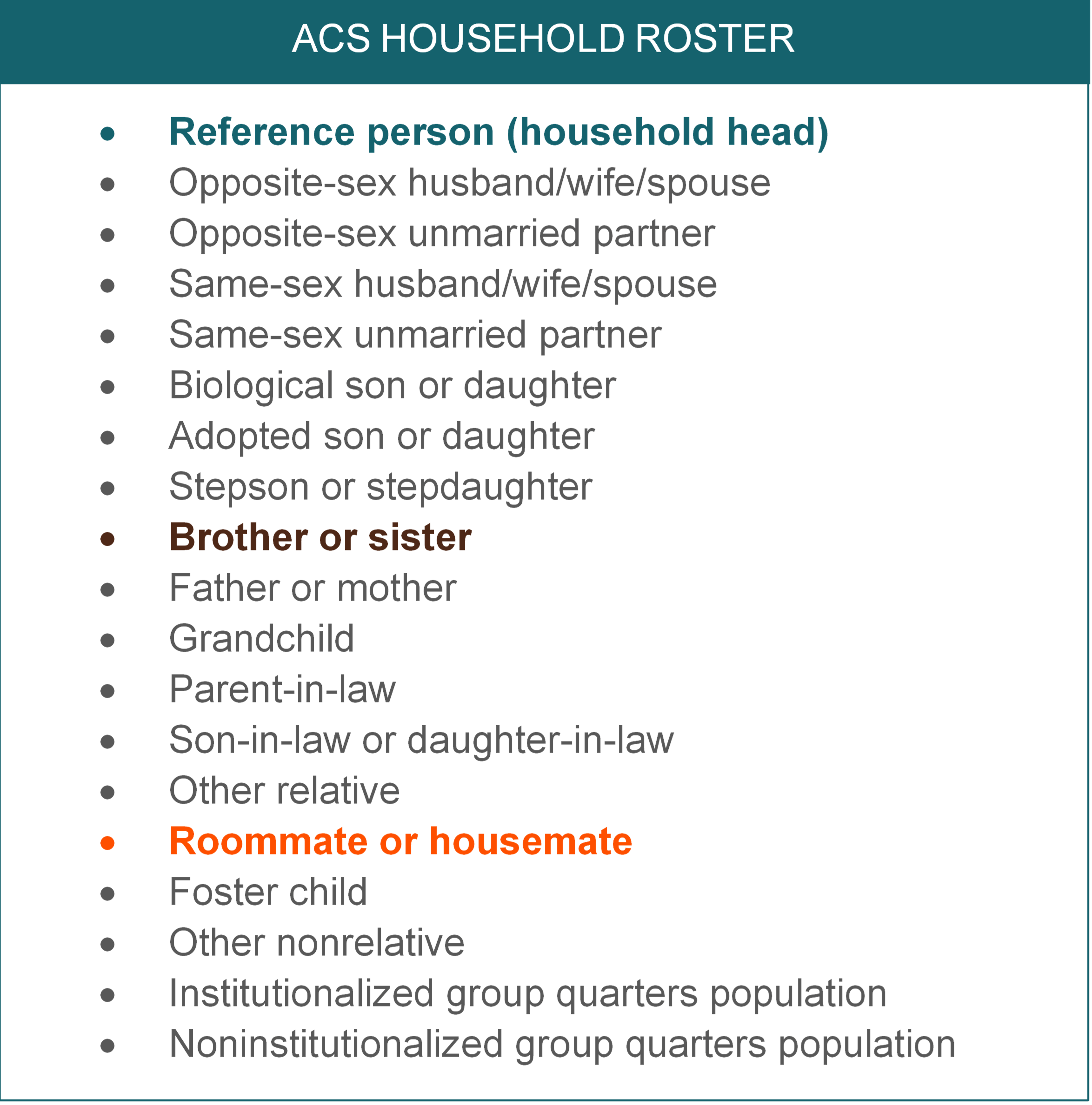
Prevalence of living with an adult roommate and sibling
In 2020 the estimated number of older adults living with an adult roommate was 930,165, and the estimated number living with a sibling was 1,035,283 (out of 67,354,383 estimated older adult household heads).
- In 2015, the prevalence of living with a sibling was 14 per 1,000 which increased to 15 per 1,000 in 2020.
- The prevalence of living with an adult roommate was 11 per 1,000 in 2015. Relative to living with a sibling, living with an adult roommate exhibited a larger increase, rising to 14 per 1,000 in 2020.
Figure 1. Prevalence of living with an adult roommate and sibling, 2015 & 2020
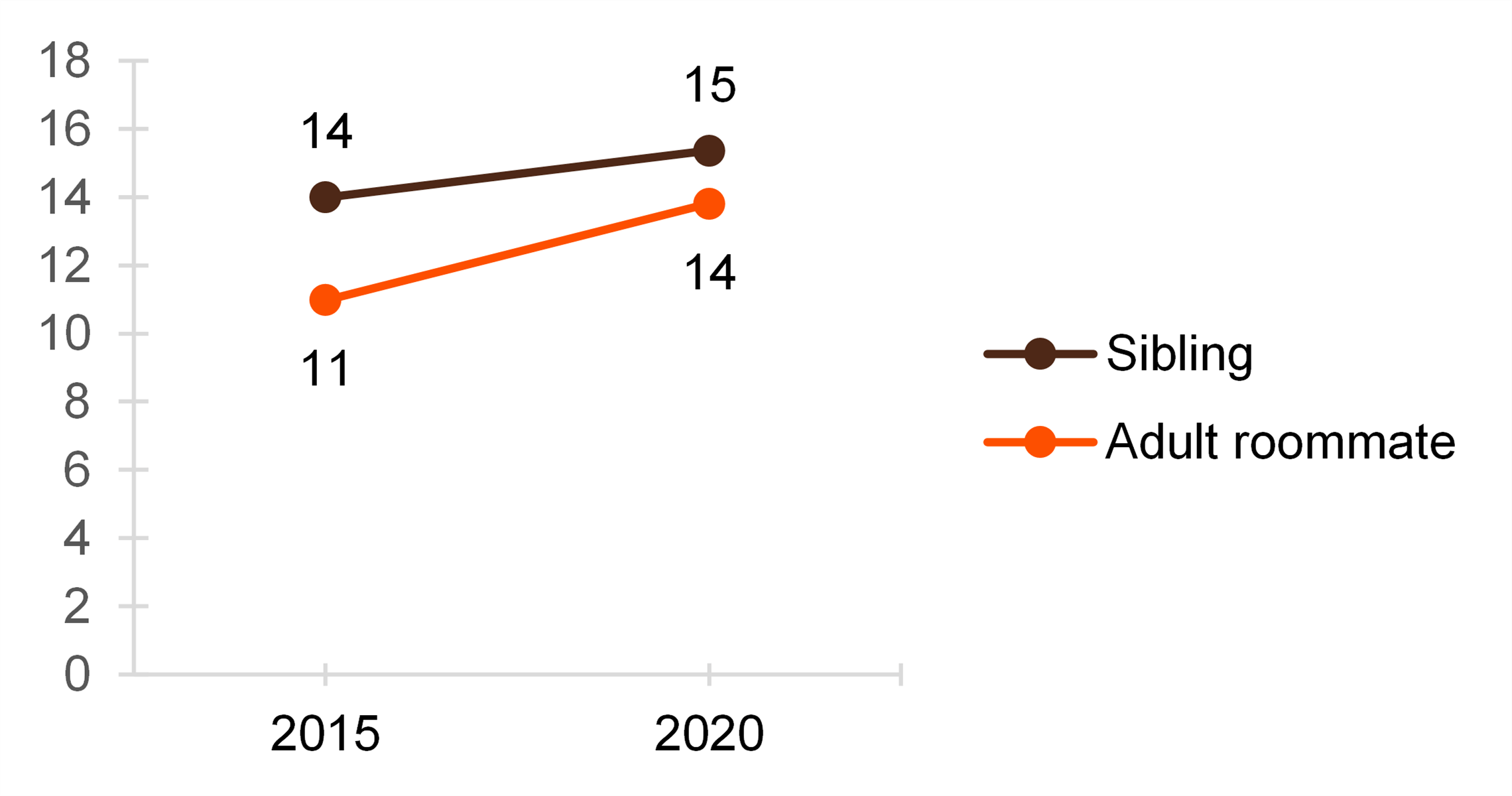
Youngest age of adult roommate
- Among older adults living with an adult roommate, for most, the youngest aged roommate was 50 years old or older (61%).
- For 25%, the youngest roommate was between the ages of 30 and 49, and for 14%, between the ages of 18 and 29.
Figure 2. Youngest age of adult roommate, 2020
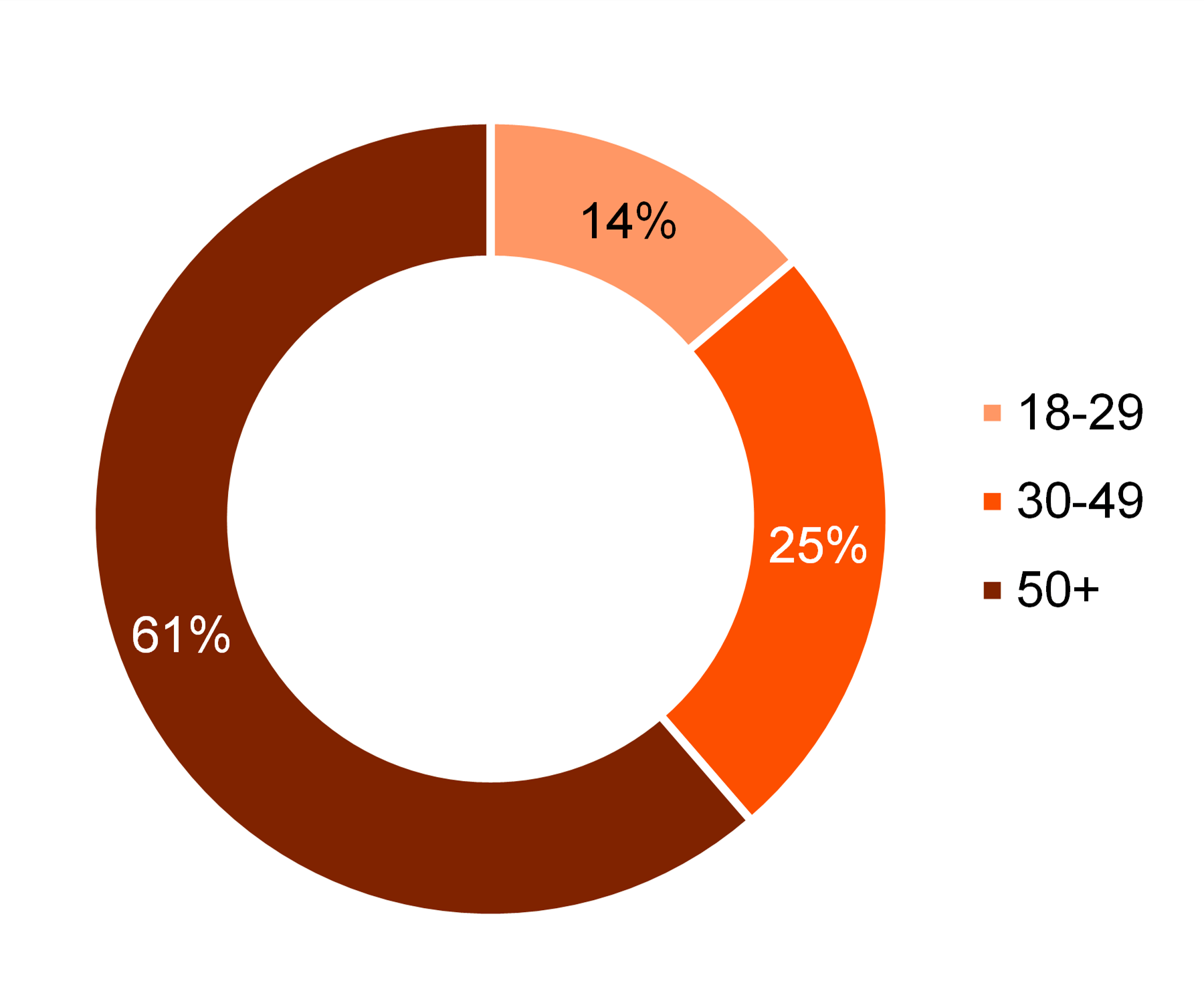
Marital status by living arrangement
- Older adults living with a sibling (27%) were more often married than older adults living with an adult roommate (16%).
- Older adults living with an adult roommate (45%) were more often divorced or separated than those residing with a sibling (29%).
- In terms of the share widowed, living with an adult roommate (13%) and living with a sibling (14%) were relatively similar.
- Lastly, older adults living with a sibling (30%) were more often never married compared with older adults living with an adult roommate (25%).
Figure 3. Marital status by living arrangement, 2020
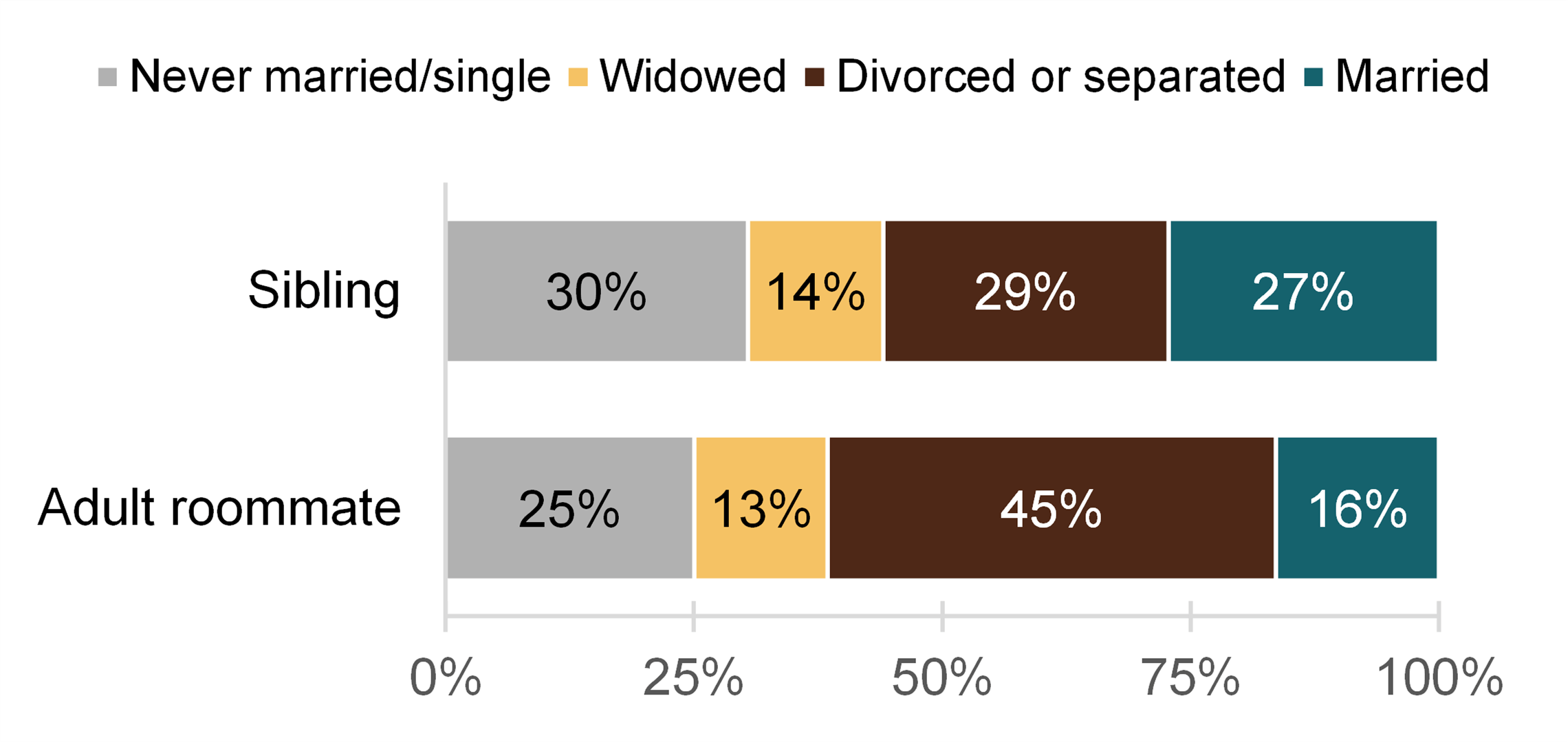
- A greater percentage of older adults living with an adult roommate (65%) was White compared with older adults living with a sibling (51%).
- A larger share of older adults residing with a sibling was Black, Asian, or Hispanic relative to older adults residing with an adult roommate.
- Similar shares of older adults living with an adult roommate were other/multiple races as older adults living with a sibling.
Figure 4. Race/ethnicity by living arrangement, 2020
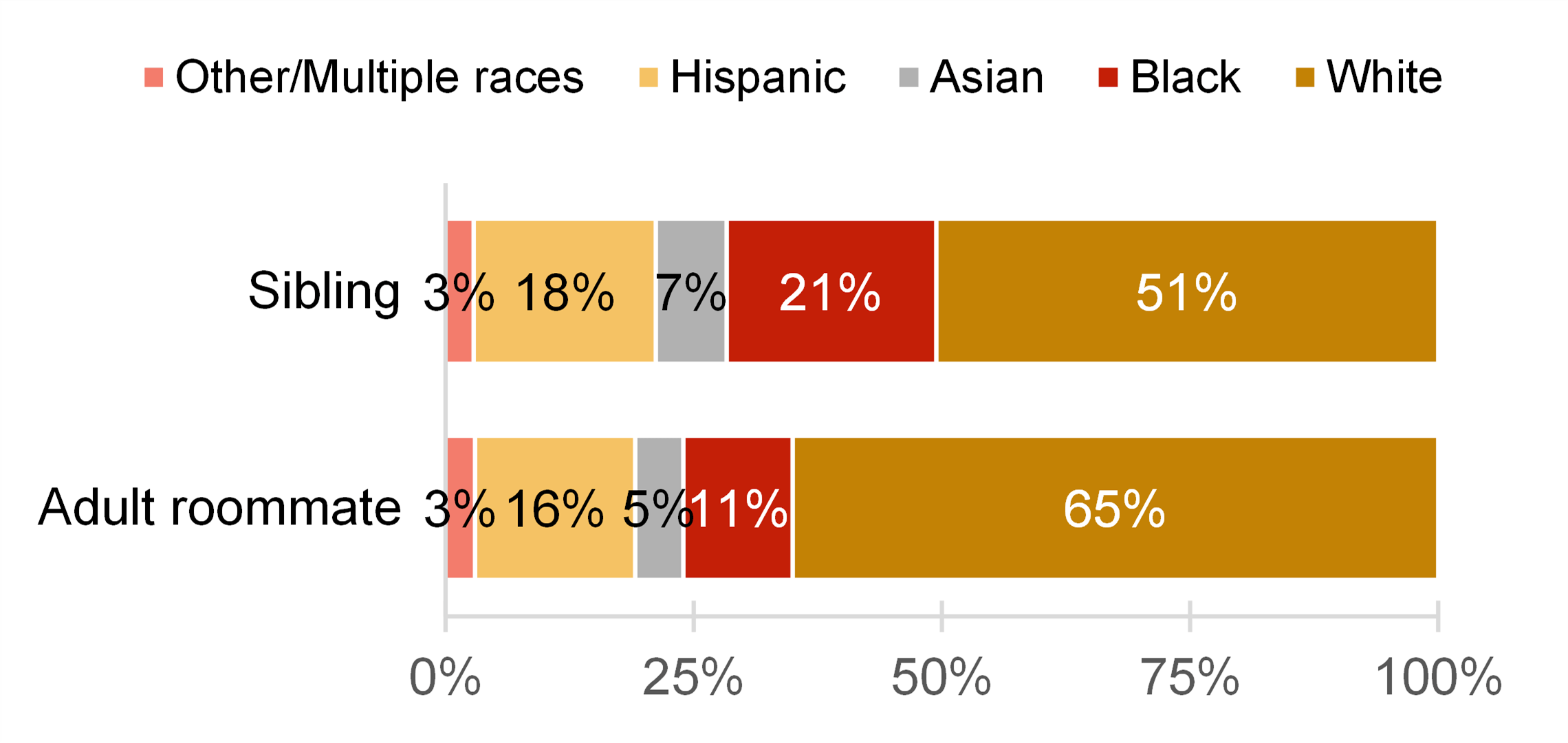
Data Source:
Ruggles, S. Flood, S., Foster, S., Goeken, R., Pacas, J., Schouweiler, M., & Sobek, M. (2021). IPUMS USA: Version 11.0 [dataset]. Minneapolis, MN: IPUMS. https://doi.org/10.18128/D010.V11.0
References:
Wu, H. (2018). Living with a sibling or roommate in older adulthood, 1990 & 2016. Family Profiles, FP-18-19. Bowling Green, OH: National Center for Family & Marriage Research. https://doi.org/10.25035/ncfmr/fp-18-19.
Suggested Citation:
Julian, C. A. (2022). Older adults living with an adult roommate and sibling, 2020. Family Profile, FP-22-32. National Center for Family & Marriage Research. https://doi.org/10.25035/ncfmr/fp-22-32
Updated: 11/07/2025 04:29PM


